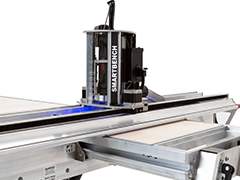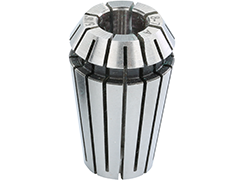- CNC Routing
CNC Routing
The modern way of woodworking
It is a computerized manufacturing process in which pre-programmed software and code controls the movement of production equipment. You have the idea, we the machine with which you can implement it! No matter whether you want to design your own advertising boards, convert a van into a motorhome or manufacture built-in parts directly at the customer's site: CNC routing machines are suitable for a wide range of applications. In our shop you will not only find mobile, fully-fledged 3-axis CNC machines, but also the right CNC router cutters for your material and the right CNC accessories for clamping and fixing your workpieces.
Frequently asked questions about CNC Routing
- How does CNC Routing work?
- For whom are CNC routing machines suitable?
- What can you do with a CNC routing machine?
- What does CAD/CAM stand for?
- Which materials can be processed with CNC machines?
-
1. How does CNC Routing work?
CNC stands for Computerized Numerical Control and describes the computer-aided control of cutting machine tools. Using the example of a 3-axis CNC routing machine, we would like to explain briefly how CNC routing works. A router motor can be moved in all three spatial dimensions on three axes (X,Y,Z) that are perpendicular to each other. In the simplest case, the movement is carried out by stepper motors. An electronic control tells the individual stepper motors how far they should rotate, i.e. how far the router motor should move in the respective direction. By controlling several motors at the same time, it is possible,for example, to create almost perfect circular movements. So that the user doesn't have to do all this by hand, there are CAD/CAM programs which, for example, automatically create the appropriate routing paths from a computer-generated 3D object. These are then translated into the correct motor movements by the control unit.
-
2. For whom are CNC routing machines suitable?
Due to the almost infinite spectrum of possibilities, CNC milling machines are suitable for a wide range of disciplines:
Model makers can use it to create and modify prototype parts quickly and efficiently (rapid prototyping)
A wide variety of materials can be processed on CNC machines
Advertising technicians can easily create customized displays, neon signs and banners
For camper and caravan conversions and cabinet makers, molded parts can be quickly adapted to different vehicle models and customer requirements and produced on the CNC.
Due to the fact that CNC routing machines don't require any supervision when operating it is possible to get on with other jobs at the same time , saving time and money. Even small series can be realized quickly without having to build up a corresponding production line first.
-
3. What can you do with a CNC routing machine?
The spectrum of possibilities of CNC milling is almost infinite. Starting with simple two-dimensional milling of panel material, through three-dimensional objects with overhangs and sloping or curved contours, to the complete machining of, for example, an engine block in a single operation, everything is possible. Thanks to countless tutorials and videos on the Internet, even beginners can quickly achieve impressive results.
-
4. What does CAD/CAM stand for?
CAD stands for Computer Aided Design and describes the computer-aided creation of 2D drawings and 3D objects. In CAD programs are generally the first step from the idea to the finished product. The results of CAD are e.g. sketches, drawings or 3D models which are then often used as a basis for CAM. CAM stands for Computer Aided Machining. This means e.g. the creation of paths for CNC routing. CAM programs determine how objects are routed out, which routing strategies are used and which router cutters are used. Here it is often decided between 2.5D and 3D. 2.5D is meant when two-dimensional contours are machined at different depths. It is called 3D when inclined or curved surfaces are also machined.
-
5. Which materials can be processed with CNC machines?
This basically depends on the stiffness of the overall system. The harder the material to be processed, the stiffer and more stable the roting machine must be. Aluminium and all types of wood are no problem on commercial routing machines. But also stainless steel, Corian and other composite materials can be processed with CNC machines.









